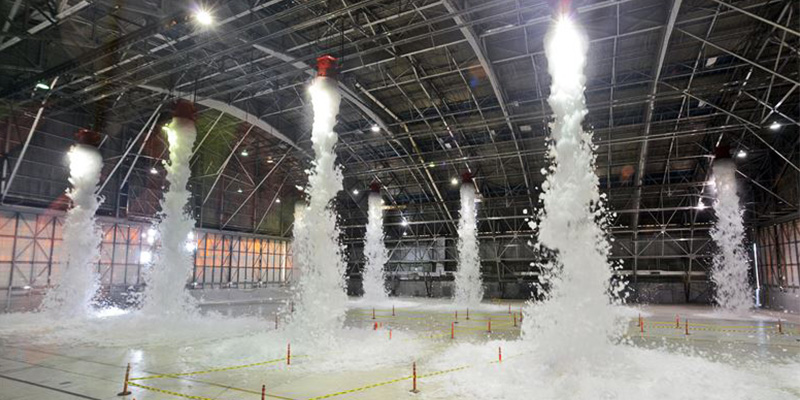Technical Area | Articles
The place to solve all your BIM doubts
Considerations for Fire Design in the UK & Australia
BIM Implementation Planning & Budgeting Corporate Project
Incidents of fire in the recent past in the UK and Australia call for the need to ensure the fire design in construction is as near-flawless as possible. In Australia, the Warren Centre report dealing with fire safety engineering has helped shape some of the required regulations. In the UK, fire design regulations are detailed, precise and extensive. Fire design service providers must develop a thorough working knowledge of firefighting systems design in each of these nations to provide efficient and safe fire design.
Australia
The Warren Centre considers guidelines used by engineers to create firefighting systems design. These guidelines are developed according to the International Fire Engineering Guidelines and fire safety verification methods (FSVM). The various methods and materials used in fire safety design must be assessed for adequacy. Engineers must develop and adhere to detailed fire safety specifications for each design brief.
So, what does this mean for firefighting systems design in Australia?
- Codes have been revised, due to the rampant use, earlier, of noncompliant building material and combustible cladding.
- Fire sprinkler requirements have been extended to residential buildings between 4-8 storeys, as per the new National Construction Code
- Fire protection makes up approximately 60 percent of the building code, and non-sprinkler protection can be provided, as long as other fire safety measures meet prescribed standards.
The building code for Australia (BCA) includes the following fire safety requirements:
- Buildings taller than 3 storeys must have non-combustible external materials.
- During concept design, architects and engineers must consult with fire protection and fire safety consultants, rather than wait for the schematic or detailed stages.
- Detailed checking is required to ensure that all fire safety equipment has been installed and is operating in optimum condition.
Employers must execute the following requirements:
- Buildings must comply with fire regulations and standards.
- Risk assessments must be conducted to determine the right level of fire safety measures.
- Identify high-risk areas in case of fire
- Provide training for fire prevention, emergence evacuation and the use of firefighting equipment for employees
- Ensure suitable fire safety measures have been put in place
- Ensure any building modifications do not interfere with the building’s fire safety
As far as building designers and building contractors go, they must ensure the following:
- Fire integrity of buildings
- Provision of suitable fire escape routes
- Adequate evacuation time and distances to safe places
- Fitting of fire doors and other relevant fire barriers
- Fire separation chambers or compartments, when possible
- Provision of safe places, refuges, where employees will be protected from fire
UK
Extensive legislation and building laws exist in the UK for fire safety design. The Regulatory Reform (Fire Safety) Order 2005 is applied in England and Wales. The Fire Safety (Scotland) Regulations 2006 governs Scotland, and in Northern Ireland, it is the Fire and Rescue Services (Northern Ireland) Order 2006 that is followed. For the management and use of residential buildings, BS 9991:2015 details a Code of Practice for fire safety design.
For building owners and designers, the following guidelines must be followed for the design layout:
- Building fabric with fire-resistant material
- Layout that impedes fire from spreading
- Building construction should maintain stability for a ‘reasonable period’.
- Inhibit spread of fire and smoke in ducts, ceiling voids or floor voids.
- Large buildings must have compartmentalisation with fire-resistant materials, to inhibit the spread of fire and help evacuation.
- Walls shared by 2 buildings must be designed to stop the spread of fire.
- Roof and outside walls should not include thatch, wood shingles and certain plastics.
- Fire resistance is defined as the capability of a wall, floor or door to endure heat and fire. Fire resistance of 30 minutes can help people find escape routes. The specific types of construction that will enable fire resistance include:
- Building an internal, non-load bearing wall, that is a framed construction wall, with 72mm x 37mm timber studs at 600mm centres and faced with a 12.5mm plasterboard that has all its joints taped and filled.
- Building a masonry cavity wall that is made of solid clay bricks, brick pieces, shale, concrete or calcium silicate, with a minimum thickness of 90mm on each leaf.
The passive fire protection systems and the integrity of compartmentalised structures should never be compromised. Fire compartmentalisation refers to subdivisions of a large space with fire resistant walls, floors and doors designed to restrict the spreading of smoke and fire between floors. Each subdivision has its own escape routes.
If fire doors and their gaps are not sealed effectively, smoke can fill adjoining spaces quickly, hindering escape routes and routes to protected areas, or refuge points. These are spaces where people gather to await evacuation. Refuge points must also be enclosed in fire-resistant material. These spaces must provide:
- Enough space for the number of occupants expected to wait there
- Enough space for expected occupants plus occupants from any adjacent refuge point
- Means for escape via the stairs
- Any protected area must be evacuated ideally in 2.5 minutes, according to the National Association for Safety and Health in Care Services (NASHiCS) published in 2016
- Evacuation procedure should include arrangements with fire and rescue services.
- Precautions taken to help ensure the protection of people from smoke and fire, that can spread between floors through the lift shaft, include the following:
- Use fire-resisting construction and a fire-door access to separate the lift from the rest of the floor.
- The lift shaft and stairs can be in a protected enclosure.
- Ventilation of .1m2 at the top of the lift must be provided for smoke to escape.
In addition, regulations for escape route design decree that 1050mm is the required minimum width of an escape route. Corridors, foyers and stairwells must be free of combustible items and any other obstacles. Corridors that serve bedrooms should have self-closing devices and be of 30-minute fire-resisting standard.
Construction (Design and Management) Regulations 2015, or CDM regulations, specify that clients, designers and contractors must agree on fire safety measures, and the principal designer is responsible for the coordination of the pre-construction phase, which includes fire safety. The main contractor will be held responsible for daily on-site fire safety.
Ultimately, firefighting systems design for either country will need experienced fire design service providers that are both technically adept at fire alarm drafting and design services and fully knowledgeable of the rules and regulations of Australia and the UK. As Mechanical & Electrical Design Services prove to be more cost-effective overseas, firms from both Australia and the UK need to ensure that their offshore partners have experience with and are updated on their respective regulations.
Source: https://www.xscad.com/











